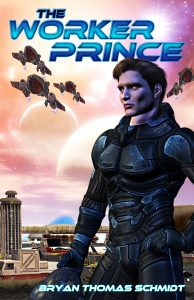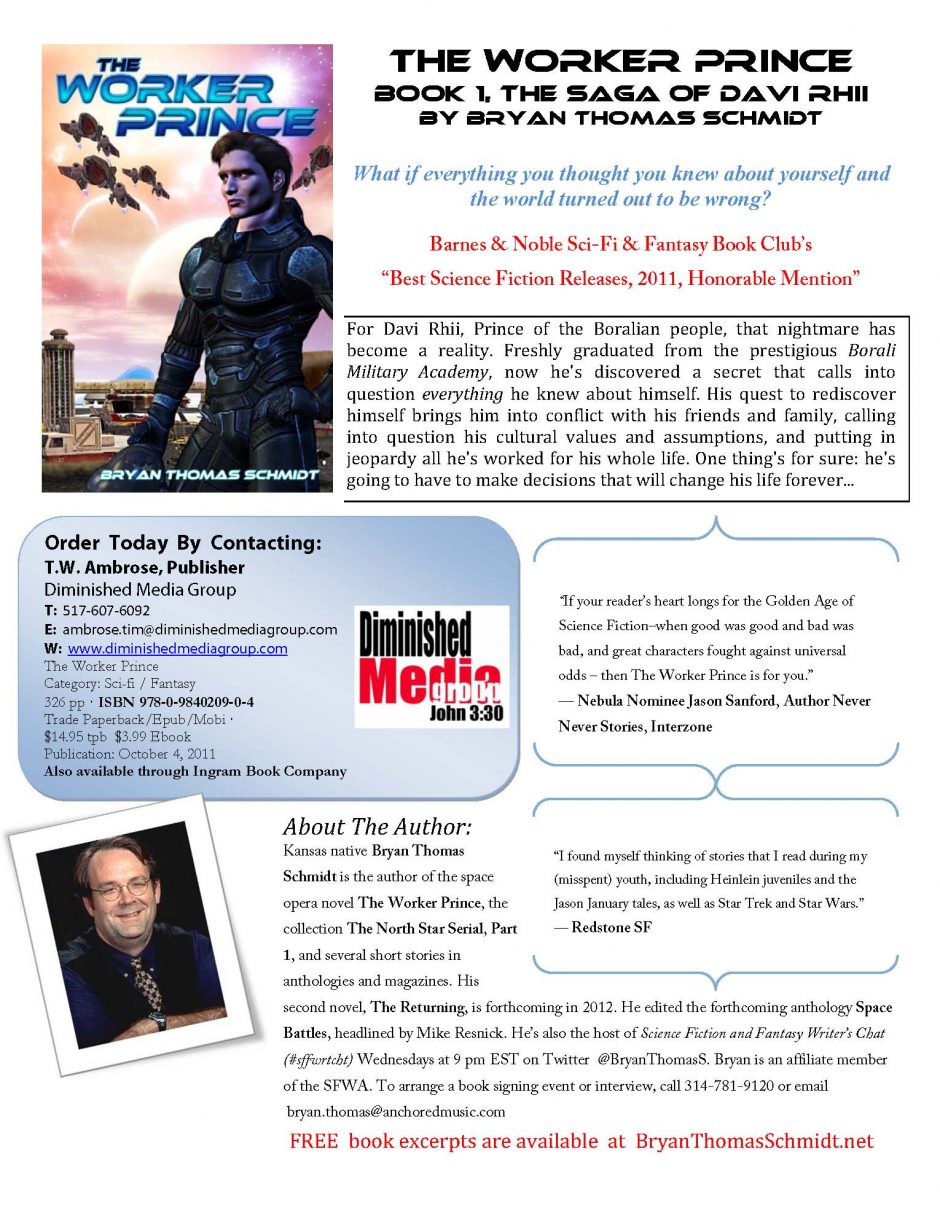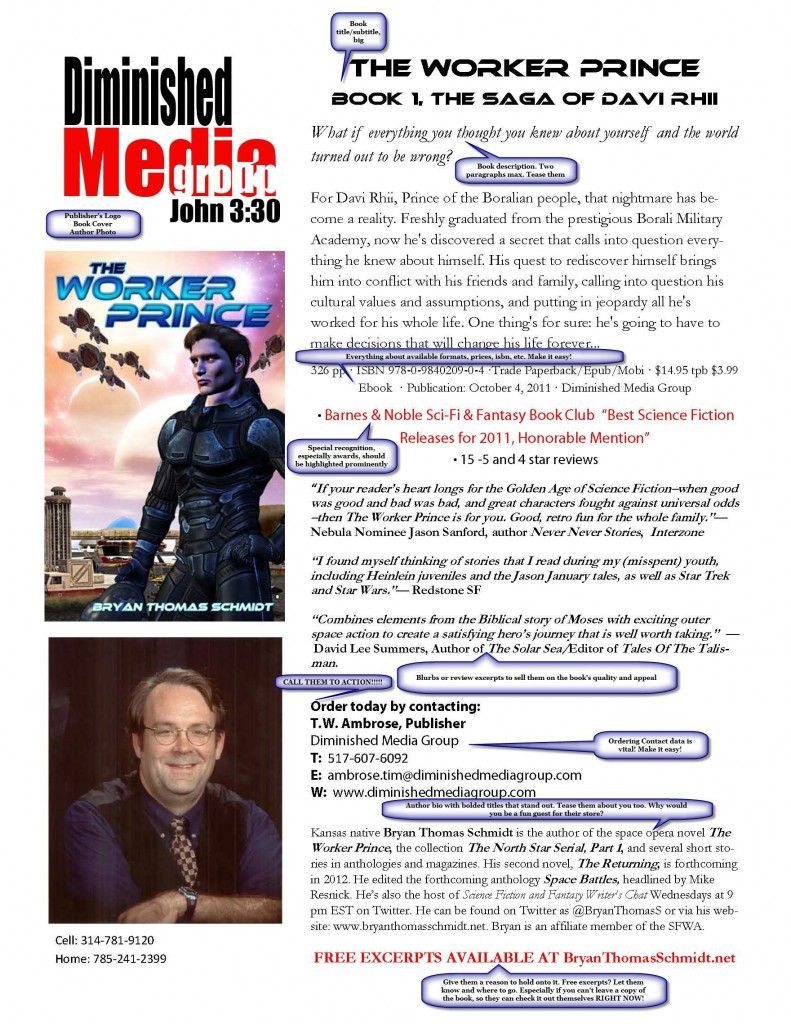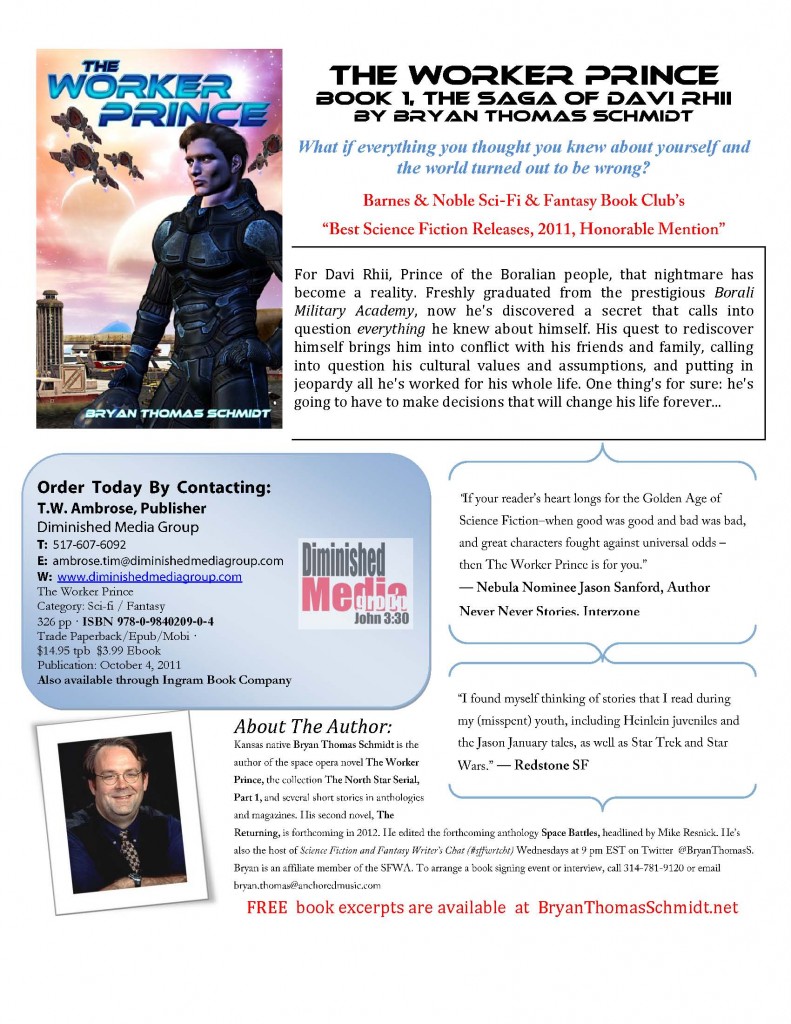 I know it’s not obvious but I’m not a patient person. I hate waiting. I hate lines. The only form of delay I enjoy is procrastination. I’m awesome with that one. But because of this problems have developed from time to time. I always heard people talk about how important it was to get distance from your work before doing second drafts, etc. I always struggled. So excited about it, caught up. It was hell to put it aside for two or three days, let alone a month or two. And I think some of the criticisms I got in reviews for The Worker Prince reflects that struggle. I see little things I could done better. I know, authors always do that. But I see a few bigger things, too. (Oh, you say, that never happens to me.) Okay. I’m not perfect. Is that what you needed to hear? Feeling good about yourself?
I know it’s not obvious but I’m not a patient person. I hate waiting. I hate lines. The only form of delay I enjoy is procrastination. I’m awesome with that one. But because of this problems have developed from time to time. I always heard people talk about how important it was to get distance from your work before doing second drafts, etc. I always struggled. So excited about it, caught up. It was hell to put it aside for two or three days, let alone a month or two. And I think some of the criticisms I got in reviews for The Worker Prince reflects that struggle. I see little things I could done better. I know, authors always do that. But I see a few bigger things, too. (Oh, you say, that never happens to me.) Okay. I’m not perfect. Is that what you needed to hear? Feeling good about yourself?
In early November though, I turned in The Returning, my sequel to The Worker Prince, and my publisher was busy with another novel release and I launched immediately into a sword & sorcery book I was chomping at the bit to write. And somehow, I didn’t look at The Returning again until early January, when we started editing it. My beta reader’s feedback had already been incorporated before the publisher got it. So I was feeling pretty confident it was a better book than The Worker Prince. (My goal in life is to improve, just saying). But nonetheless, before I cracked the pages, I compiled a chart of all the negatives from the good reviews The Worker Prince has received and decided to make sure none of them repeated in the sequel.
As I began to go back through, it was fun to rediscover my book. It had been written over nine hellish months during which my now ex was hospitalized five times for mental illness, I lost my part time job, went through divorce, came close to bankruptcy, etc. In other words, a period where I had weeks, even a whole month, of no writing. So I wrote in total chaos. To make matters worse, the plot was complicated and I had fifteen Point of View characters. By the time I was done, I was totally struggling to remember what I’d done earlier. I was sure the book was a complete mess. My beta readers, however, raved and, upon reading The Worker Prince (which I refused to let them do until they were well into The Returning), assurred me this book was better. I didn’t really find it that easy to believe. Until I started back through.
Not saying it’s genius. Not saying it’s Twain. But I did find the book a lot better than I remembered. I also found a lot of conflicting plot holes and repetition and other items needing fixing. Things I didn’t catch on my second pass with beta reader’s notes. Things they didn’t catch. I’m pretty confident I wouldn’t have caught them without that distance. So, yeah, I’m starting to believe even more than I did before that good distance is vital to better writing.
For example, descriptions are a weakness for me. I come from a screenwriting and journalism background so having to wax poetic about setting and emotions is hard for me. I didn’t practice it much until I started with fiction. Much of my rewrites involve looking for opportunities to do this. In fact, I found that I had not even described the various vehicles in my story. Everybody knows what they are from book 1, right? Ha! Never assume. I’ve striven very hard to make book 2 a standalone entry for the series, not requiring people to go back to the first book unless they want to. (I hope they will, I need the sales and it has its own charms, I swear). That was why I wanted betas who hadn’t read the first book. So here I was leaving out vital description. How embarrassing would it have been to leave that out?
Other examples, I found repeated scenes where I did the same thing twice in separate settings. I found extraneous dialogue to cut. I found repetitive word choices. All things it’s so much easier to see with fresh eyes. Fresh eyes also helps me see character arcs and themes better. I find motifs and other elements I can repeat or use to add depth to the story and characters as well.
So, yes, I do believe distancing yourself from your work is vital to good fiction writing. And I think we do ourselves a favor when we force patience and take time away. After all, it writing is an art (and I do strive for it to be), part of the artistic process is seeking excellence. Anything one can do to get better perspective and improve is worth doing. Don’t you think?
What are your experiences with taking time away? Do you have a set period? Do you ignore the advice? Has it helped you? Hindered you? Frustrated you? I’d love to discuss it more in comments. I’m sure there’s a lot more to say but those are my thoughts for now. For what it’s worth…
 Bryan Thomas Schmidt is the author of the space opera novel The Worker Prince, a Barnes & Noble Best SF Releases of 2011 Honorable Mention, the collection The North Star Serial, Part 1, and has several short stories forthcoming in anthologies and magazines. His second novel, The Returning, is forthcoming from Diminished Media Group in 2012. He’s also the host of Science Fiction and Fantasy Writer’s Chatevery Wednesday at 9 pm EST on Twitter, where he interviews people like Mike Resnick, AC Crispin, Kevin J. Anderson and Kristine Kathryn Rusch. A frequent contributor to Adventures In SF Publishing, Grasping For The Wind and SF Signal, he can be found online as @BryanThomasS on Twitter or via his website. Excerpts from The Worker Prince can be found on his blog. Bryan is an affiliate member of the SFWA.
Bryan Thomas Schmidt is the author of the space opera novel The Worker Prince, a Barnes & Noble Best SF Releases of 2011 Honorable Mention, the collection The North Star Serial, Part 1, and has several short stories forthcoming in anthologies and magazines. His second novel, The Returning, is forthcoming from Diminished Media Group in 2012. He’s also the host of Science Fiction and Fantasy Writer’s Chatevery Wednesday at 9 pm EST on Twitter, where he interviews people like Mike Resnick, AC Crispin, Kevin J. Anderson and Kristine Kathryn Rusch. A frequent contributor to Adventures In SF Publishing, Grasping For The Wind and SF Signal, he can be found online as @BryanThomasS on Twitter or via his website. Excerpts from The Worker Prince can be found on his blog. Bryan is an affiliate member of the SFWA.
4 5-star & 12 4-star reviews THE WORKER PRINCE $4.99 Kindle http://amzn.to/pnxaNm or Nook http://bit.ly/ni9OFh $14.99 tpb http://bit.ly/qIJCkS.








